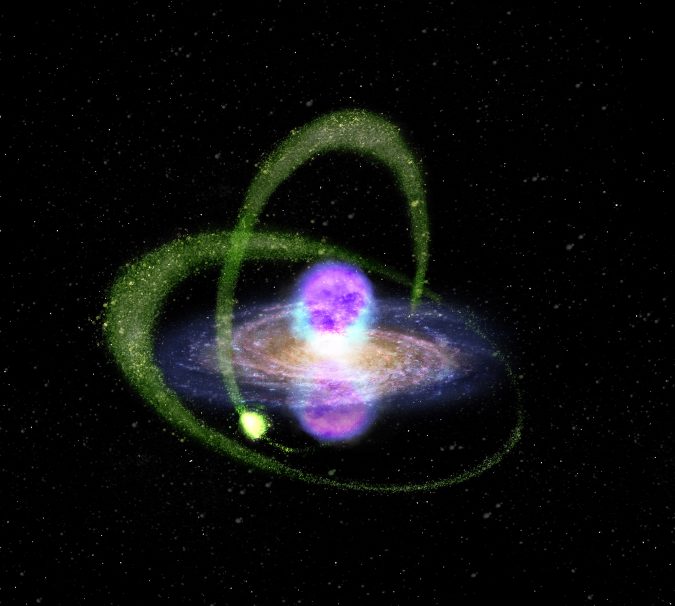Researchers have used giant lobes of gamma radiation to find that a small satellite galaxy of the Milky Way is filled with dark matter, but whose emissions are more likely the result of millisecond pulsars blasting out cosmic particles.
Through giant lobes of gamma radiation, an international team of researchers has found a small satellite galaxy of the Milky Way filled with dark matter, but whose emissions are more likely the result of millisecond pulsars blasting out cosmic particles, reports a new study in Nature Astronomy.
The center of our galaxy is blowing a pair of colossal bubbles of gamma radiation (magenta structures in figure 1) spanning 50,000 light-years across. Discovered with the Fermi Gamma-ray Space Telescope about 10 years ago, the source of this hourglass-shaped phenomenon has remained unclear.

Called Fermi bubbles, these lobes of radiation are patched with a few enigmatic substructures of very bright gamma-ray emission. One of the brightest spots, called the Fermi cocoon, is found in the southern lobe (magnified inset in figure 2) and was originally thought to be due to past outbursts from the Galaxy’s supermassive black hole.
An international team of researchers co-led by former Kavli Institute for the Physics and Mathematics of the Universe (Kavli IPMU) Project Researcher Oscar Macias (currently GRAPPA Fellow at the University of Amsterdam) and Australian National University Associate Professor Roland Crocker, and including Kavli IPMU Visiting Scientists Shunsaku Horiuchi and Shin’ichiro Ando, analyzed data from GAIA and Fermi space telescopes to reveal that the Fermi cocoon is actually due to emission from the Sagittarius dwarf galaxy.
This satellite galaxy of the Milky Way is seen through the Fermi Bubbles from our position on Earth (figure 1). Due to its tight orbit around our Galaxy and previous passages through the galactic disk, it has lost most of its interstellar gas and many of its stars have been ripped from its core into elongated streams.
Given that Sagittarius was quiescent — with no gas and no stellar nurseries — there were only a few possibilities for its gamma-ray emission, including i) a population of unknown millisecond pulsars or ii) dark matter annihilations.
Millisecond pulsars are remnants of certain types of stars, significantly more massive than the Sun, that are in close binary systems, but now blast out cosmic particles as a result of their extreme rotational energies. The electrons fired by millisecond pulsars collide with low-energy photons of the Cosmic Microwave Background propelling them to high-energy gamma radiation.
The researchers demonstrated that the gamma-ray cocoon could be explained by millisecond pulsars in the Sagittarius dwarf, so disfavoring the dark matter explanation.
Their discovery sheds light on millisecond pulsars as efficient accelerators of highly-energetic electrons and positrons, and also suggests that similar physical processes could be ongoing in other dwarf satellite galaxies of the Milky Way.
“This is significant because dark matter researchers have long believed that an observation of gamma rays from a dwarf satellite would be a smoking gun signature for dark matter annihilation.”
“Our study compels a reassessment of the high energy emission capabilities of quiescent stellar objects, such as dwarf spheroidal galaxies, and their role as prime targets for dark matter annihilation searches,” said Macias.
Details of their study were published in Nature Astronomy on September 5.








ree54 qhleb tiyc2h jcm81b ozv3d dvcb1 4nvyva jt1h